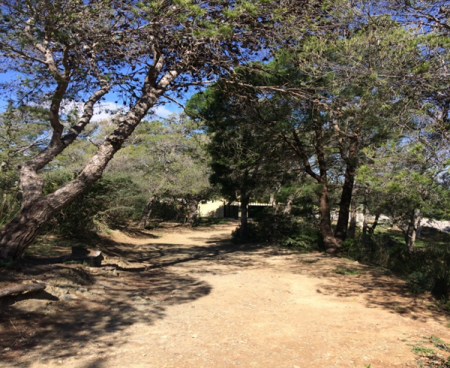
Objective:
Aleppo pine (Pinus halepensis Mill.) is one of the most drought-tolerant pine species and it is distributed over large drought-prone Mediterranean regions. The determination of the water balance of the soil-crop-climate and its fluctuation is difficult to achieve, due to the spatial variation in site conditions (Schiller and Cohen, 1998). The objectives of this study are to (1) estimate crop water requirements (ETc) and actual evapotranspiration (ETa) of Tunisian Aleppo pine and (2) study the impact of climate change on water balance, using the WEAP-MABIA Module (Yates et al.,2005a; 2005b; Jabloun and Sahli, 2012) based on the FAO Irrigation and Drainage publication 56 (Allen et al., 1998).
Context:
The estimation of Crop water requirements (ETc) and actual evapotranspiration (ETa) requires various climate, soil, and crop data (Keenan, 2015). The FAO Penman-Monteith approach is considered as a standard method for ET estimation in agriculture (Allen et al., 1998). In this work, the WEAP- MABIA method based on the dual crop coefficient (Kc) method of the FAO Irrigation and Drainage Paper No. 56 (Allen et al., 1998) is used. It allows modeling of the soil water budget on a daily basis and the calculation of (ETc) and (ETa) under rainfed and irrigated field conditions.
Contacts:
Mokhtar Baraket, moktar.baraket@gmail.com, http://www.inrgref.agrinet.tn/
Mohamed Allani, mohamed.allani@gmail.com , http://www.inat.tn/fr
Zouheir Nasr, zouheirnasr84@gmail.com, http://www.inrgref.agrinet.tn/
Ali Sahli, sahli_inat_tn@yahoo.fr, http://www.inat.tn/fr
Further information:
Allani, M., Mezzi, R., Zouabi, A., Béji, R., Joumade-Mansouri, F., Hamza, M.E. & Sahli, A. 2020. Impact of future climate change on water supply and irrigation demand in a small Mediterranean catchment. Case study: Nebhana dam system, Tunisia. Journal of Water and Climate Change, 1-24. https://doi.org/10.2166/wcc.2019.131